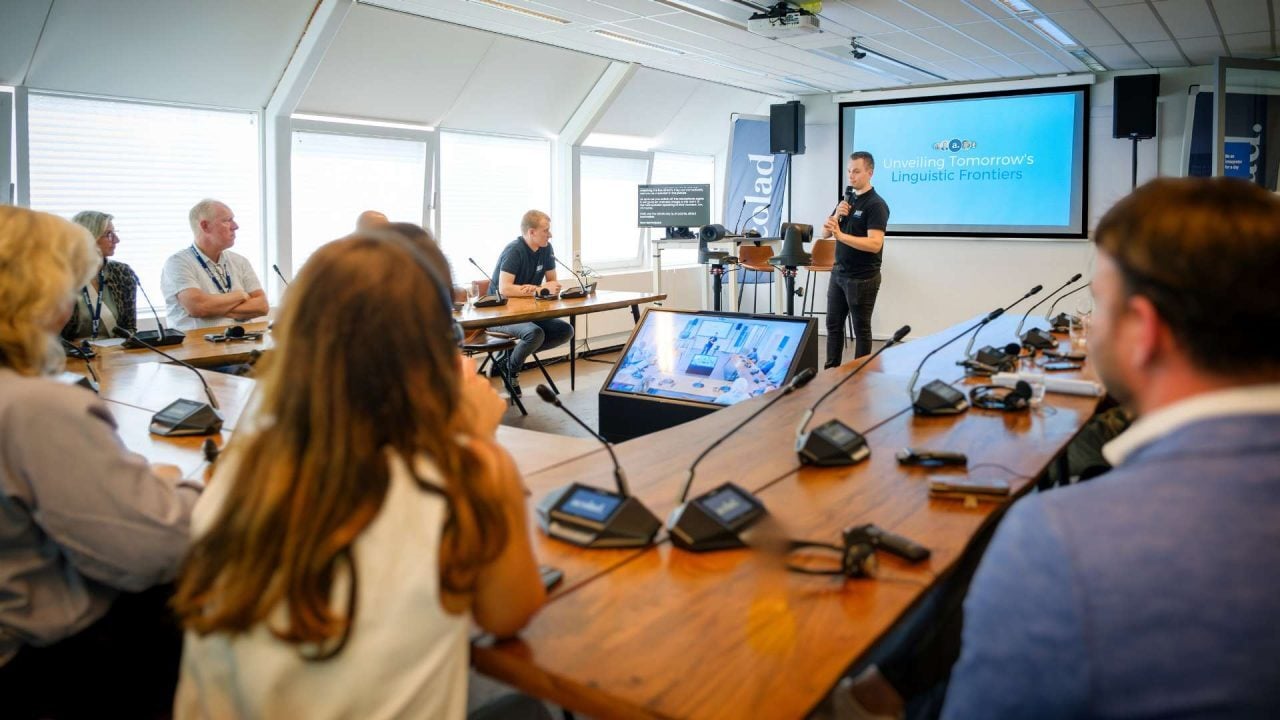Interpreting technology is advancing quicker than ever – here our Head of Interpreting Solutions Giulia Silvestrini looks at how interpreting is set to evolve and how it can balance AI with the human touch.
Interpreting is one of the language industry’s fastest-growing sectors. In this domain, human expertise is increasingly combined with new technologies to create value across organizations.
Rapid technological expansion during the Covid-19 pandemic led to growth in over-the-phone (OPI), video remote interpreting (VRI), and remote simultaneous interpreting (RSI) along with the use of interpretation in hybrid settings - interactions where remote access to meetings with an onsite component is enabled by technology.
Now, experts predict that the interpreting field will continue growing at annual rates of between 7% and 12% - a forecast driven by strong growth in the healthcare sector and public administration, such as justice and education.
From the public to the corporate sector, the reliance on traditional in-person interpreting services has decreased, as organizations have increasingly turned to technology solutions for their meetings, hearings, appointments, and consultations - for greater ease of use and efficiency.
To take a closer look at what is driving the increase in demand of interpreting growth, we asked our Head of Interpreting Solutions Giulia Silvestrini to outline her key insights into future trends as the field of interpreting evolves.
1. Technology's Accelerating Impact
Technology is revolutionizing how interpreting services are accessed and delivered. From traditional on-site interpreting to hybrid and remote solutions, advancements are making multilingual communication more seamless than ever. For example, software-based solutions allow you to listen to the interpretation or access AI-based live captions or AI interpretation with your own devices.
2. Interpreting Set to Grow
Despite a mixed global economic picture, most experts are predicting that the interpreting market is set to continue to grow, it seems that the significantly higher demand for technology-driven interpreting solutions is here to stay, with higher adoption levels and increased awareness. We’ll talk about the technology that’s leading to greater adoption next…
3. Expanding Use Cases
The interpreting landscape is diversifying beyond traditional interpreting. Solutions now encompass live captioning and AI interpreting technologies.
One of the major benefits of the increasing advancements of these technologies is that interpreting is becoming available for a much wider range of interactions and use cases than ever before – because it’s helping to drive down costs and barriers as service accessibility increases. Interpreting continues transitioning from a service reserved for premium scenarios to one with broader applications. Technological advancements are a key driver, allowing for a wider range of services tailored to different settings and budgets.
4. Accessibility Through Innovation
New tools are constantly emerging to address evolving language needs. These advancements not only expand reach but also make interpreting services more affordable and accessible, fostering broader adoption of multilingual communication.
We saw the explosion of remote interpreting during the Covid-19 pandemic and are already seeing the spread of live captioning and AI interpreting. While tools and capabilities continue evolving rapidly, the direction of travel is toward greater accessibility and affordability.













